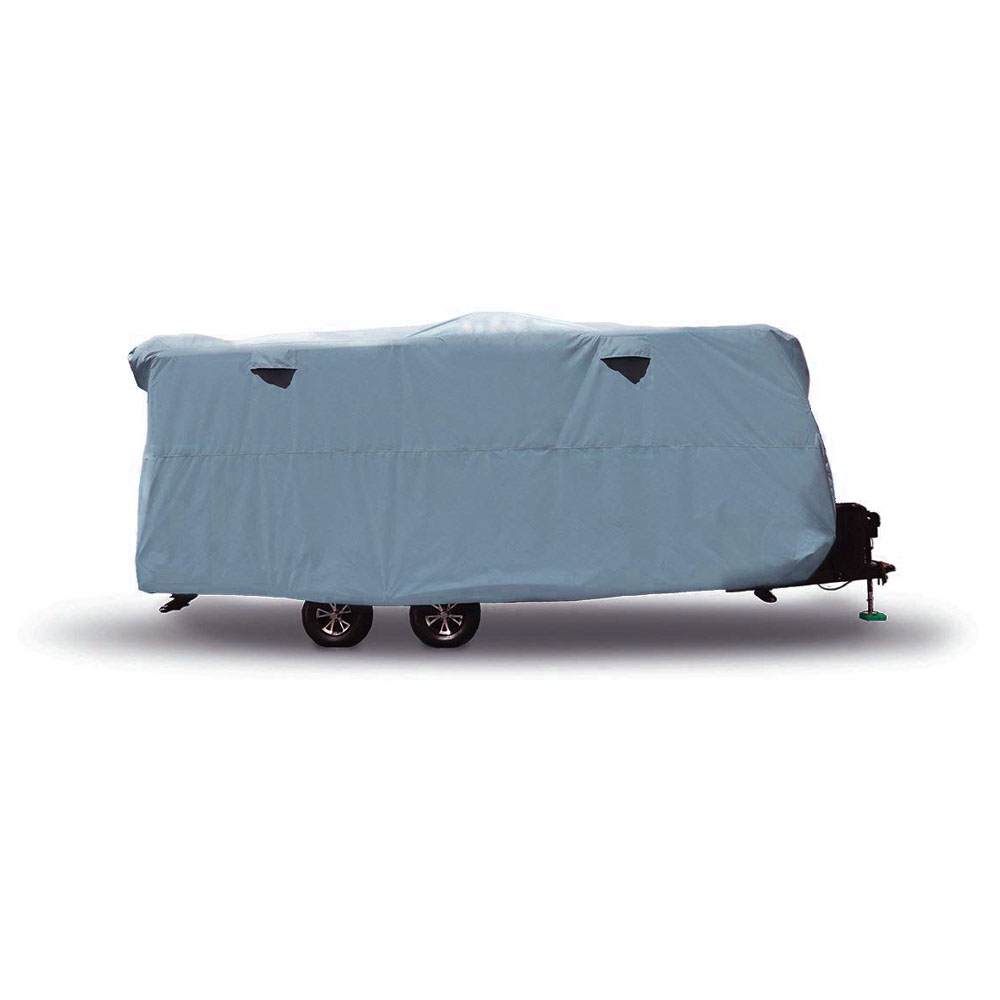Climate change and the parks
Help power the National Parks Traveler’s coverage of national parks and protected areas. Scamp Trailer

Winter RVing in the national parks brings solitude and many other benefits, but you need to be prepared/Rene Agredano
“You can die out here and nobody would know it for a week, or longer,” the BLM ranger warned after I mentioned we were headed to Basin and Range National Monument. I was only inquiring about road conditions, but if it wasn’t for him, wanderlust might have gotten the best of us when we decided on an early November visit.
Shortly after receiving the ominous warning, we rolled into the desolate terrain carrying a week’s worth of provisions, propane, and our RV satellite internet system. We thought we were prepared, until the next day when a cold front with gusty winds and snow flurries stalled over the remote desert terrain. The bitter temperatures caught us by surprise as thin sheets of ice blanketed our RV. Our generator grew fussy, and when a thick cloud cover hijacked our Internet connectivity to the outside world we got nervous. While riding out the weather and hoping for the best, we only spotted one vehicle moving across the landscape several miles away. Clearly, the ranger was not joking.
The trip became our benchmark for one of the most serious situations we’ve encountered as RVers. The experience taught us that even the best preparations and the most insulated RV may not be enough to survive harsh winter conditions. Anything can happen, and anyone as hell-bent as we were to visit such a remote destination in cold weather will do well to follow a few common sense winter RV camping guidelines.
Summer is by far the best and easiest time to learn how to go RVing to national parks. Whether you travel in a glitzy motorhome coach or a tiny teardrop trailer, as long as you pack a little food, adequate water, and your favorite creature comforts, even the most novice RVers have everything needed for a successful visit. But all this easy camping comes at a cost. Less campsite availability, crowded facilities and trails, road traffic, and an ongoing din of humanity impeding our connection to nature.
Winter RVing to national parks is an entirely different experience. Visitors brave enough to set up camp during colder days and even chillier nights are treated to an authentic experience with scarce crowds, more wildlife, and maximum solitude. It’s worth the effort, but just don’t go in with that same laid-back approach you might take during summer. Winter RV camping in national parks requires more prep work and common sense–especially when heading to isolated destinations without cellular coverage.
Both the Mather Campground and Trailer Village RV Park on the South Rim of the Grand Canyon are close to Mather Point/NPS, Michael Quinn, file
During any given winter, about 38 NPS sites have campgrounds that stay open for off-season RV camping. If you think you’re up to the challenge of winter RV camping in national parks, here’s what you need to know to make the most of the experience.
It doesn’t matter what type of RV you drive, the same basic winter camping rules apply to anyone heading to a national park system destination.
DO keep an eye on the weather. Having a roof over your head at night can give you a false sense of security when you’re RV camping. Our cozy homes on wheels make it easy to forget that chilly weather is about more than wearing bulky layers of clothing. Winter storms and cold winter weather generates a host of problems specific to RVs, like frozen plumbing lines and bitter cold blowing through slide-out openings. Even if you are lucky enough to have an electrical hookup at a campground, cold-weather RV challenges still happen. Don’t go into a national park RV destination without keeping a close tab on the short and long-term forecast. And if your camping destination lacks internet, take a daily walk to find the latest forecast posted at the entrance kiosk. Don’t let the weather surprise you and be ready for anything.
DON’T expect camping conveniences. Many national parks with winter RV camping are technically open, but that doesn’t mean the usual camper services will be available. In most cases, essential facilities like RV dump stations, bathrooms, water spigots, and campsite utility hookups (where available) get shut off before the first hard freeze. Conveniences like camp stores and even gas stations may also be closed. Amenities like visitor centers and laundromats are likely to be shut down too. Come with all the food and provisions you need, and check the park’s website to see what’s open before heading out.
Wildlife, such as this bighorn at Badlands National Park, can be more visible in winter when they move to lower elevations in parks/NPS, Lee McDowell file
DO arrive with camping essentials and working RV systems. Don’t leave home without allowing enough time to conduct a thorough check on your rig, such as checking your RV propane levels and fuel reserves. Verify that your solar electric power system and generator work as expected, and get your RV engine fully inspected and ready to roll on good tires. That way if sudden, severe weather moves in and you want to depart, your RV has everything it takes to roll away without issues.
DON’T forget to bring cold-weather RVing gear. The downside of cold-weather RVing in national parks is having to carry bulky items to keep you and your RV warm. The upside is that if ominous weather is on the horizon, you’ll be ready for anything. Essential cold-weather RVing gear includes things like:
pre-cut squares of Reflectix foil insulation to keep cold air from seeping through windows, ceiling vents, and other drafty areas.
Water hose heat tape or a length of foam insulation hose to wrap around your water hose and prevent freezing.
a full tank of fresh water in case hookups are shut off for the season.
an adequate battery jump system strong enough to start your RV.
consider packing a small RV-approved portable propane heater to augment your furnace and prevent house battery drainage outside of generator hours.
Pack appropriate cold-weather clothing and footwear for you and your dog if you travel with one.
Don’t let all of this preparation scare you. Cold weather camping in national parks is a blast. Create a thorough RV travel plan filled with contingencies for alternative places to camp, fuel up, and find groceries. Let people know where you are headed and when you’ll return. Do all that and you’ll be well-prepared for anything that might happen.
Searching for the best winter RV camping national park destination with cold, sometimes snowy weather? Here’s an abbreviated list of national parks with at least one campground open for winter RV camping.
Assateague Island National Seashore , MD
New River Gorge National Park and Preserve , WV
Ozark National Scenic Riverways , MO
Chickasaw National Recreation Area , OK
City of Rocks National Reserve , ID
North Cascades National Park , WA
Lake Roosevelt National Recreation Area , WA
Bighorn Canyon National Recreation Area , MT
Black Canyon of the Gunnison , CO
Curecanti National Recreation Area , CO
Rocky Mountain National Park , CO
Theodore Roosevelt National Park , ND
Wind Cave National Park , ND
Big South Fork National River and Recreation Area , TN
Great Smoky Mountains National Park , TN
Mammoth Cave National Park , KY
Bryce Canyon National Park , UT
Canyon de Chelly National Monument, AZ
Capitol Reef National Park , UT
Chaco Culture National Historial Park , NM
El Morro National Monument , NM
Grand Canyon National Park , AZ
Guadalupe Mountains National Park , TX
Natural Bridges National Park , UT
Great Basin National Park , NV
Redwood State and National Parks , CA
Lava Beds National Park , CA
Sequoia/Kings Canyon National Park , CA
Keep in mind that campground status can change depending on weather. Complete details for each destination are available in the Essential RVing Guide to the National Parks: 2022 Edition .
A copy of National Parks Traveler's financial statements may be obtained by sending a stamped, self-addressed envelope to: National Parks Traveler, P.O. Box 980452, Park City, Utah 84098. National Parks Traveler was formed in the state of Utah for the purpose of informing and educating about national parks and protected areas.
Residents of the following states may obtain a copy of our financial and additional information as stated below:
Do most RVs have a water tank heater?
How does one ensure that the water tank itself does not freeze?
In many places, you'd be totally delusional to think you can have a tank of water and your sewer system working when winter camping - it will freeze solid, even with heat tape, and how are you going to run heat tape if no electricity? You won't want your solar going for that, as if it's a gray day you may not even have enough solar for the basics. I've spent many many days camping in Utah and Colorado in the winter in various RVs, and the best thing you can do is shut down all your water systems completely, winterize your rig, and keep your water and such in jugs inside. Have a backup heater like a Little Buddy and the propane to run it. I've camped in minus 5 and my vehicle would barely start, my rugs froze to the floor, and I couldn't see out my windows due to condensation (a big problem with winter camping), yet I was warm. A good sleeping bag helps. Don't expect to live like royalty, except once you step out your door, you will feel special if you're the only one around (which can also be unsettling). The author made one BIG mistake by not mentioning having CO2 and propane monitors. And keep a window cracked, even if you have a vented heater.
I'll never forget camping in a modified cargo trailer with only a Little Buddy heater and watching the snow pile up. I was cutoff from leaving because the road out was iced up and wound down an 800 foot cliff that I wasn't willing to risk driving down. I finally went to bed and woke up to over two feet on the ground, blue skies, and the snnow sparkling everywhere. It was beautiful and I was the only one there. If you're prepared, there's little to worry about, just be prepared. My dogs loved it.
The author made one BIG mistake by not mentioning having CO2 and propane monitors.
CO2 is fine. CO, not so much.
CO is right. CO2 is carbon dioxide and not a problem in this context. Thanks for the correction.
Would you mind providing more details about where you've winter camped before?
I recall one spring break trip to Canyonlands, camping just outside the park (up Indian Creek on BLM land?) when 5-6" of sloshy snow arrived ovenight. Just magical. I had a 4WD so I didn't mind much.
National Parks Traveler is a 501(c) (3) nonprofit media organization.

Pop Up Trailer Tent Privacy Policy Terms of Use